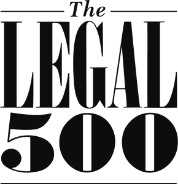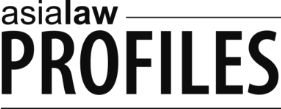The Securities and Futures Commission has issued new guidance on the disclosure of ongoing charges and past performance for SFC authorized funds. In this article, we examine the new requirements.
To enhance transparency in the retail fund market, starting from July 4, 2014, the Securities & Futures Commission (“SFC”) will require unit trusts and mutual funds (together “SFC authorized funds”) authorized under the Code on Unit Trusts and Mutual Funds (“UT Code”) and marketed to the public in Hong Kong to disclose, in accordance with prescribed methodology, (i) ongoing charges in their product Key Facts Statements (“KFS”), and (ii) past performance information in their KFS and website, if any. The new requirements are intended to enable investors to make a fair and meaningful comparison of the ongoing charges and performance of different SFC authorized funds.
GENERAL PRINCIPLES
The burden of complying with the new requirements will fall on fund management companies. In this regard, the SFC expects such management companies to establish procedures to ensure that ongoing charges and past performance are calculated and presented in accordance with prescribed methodology and the following general principles:
Timing – Investors should be provided in a timely manner with information as to the level of ongoing expenses charged to the funds and the past performance of such funds;
Standardization – Ongoing charges and past performance should be calculated in a consistent manner using a standardised methodology;
Honesty - Ongoing charges and past performance should be presented in a manner that is complete, accurate, fair and clear and not misleading.
ONGOING CHARGES
The UT Code requires disclosure in the offering document of (i) the level or basis of calculation of all fees costs and charges payable from an SFC authorized fund's property, with percentages expressed on a per annum basis, and (ii) the aggregate level of fees for investment management or advisory functions.
The new requirements supplement the UT Code, requiring that ongoing charges, whether disclosed in the initial offering document or in other marketing materials, be calculated and presented in accordance with the Guidelines for the Disclosure and Calculation of the Ongoing Charges Figure (“Ongoing Charges Guidelines”). Under the Ongoing Charges Guidelines, each SFC fund is required to calculate and disclose, at least annually after the calendar year end but before end of April of the following year (and more frequently if there is a material change in circumstance), an ongoing charges figure, presented as a percentage to 2 decimal places and calculated by dividing ongoing expenses by average net assets. For share classes with the same fee structure but with different ongoing charges figure, separate figure should be made available for each share class of each sub-fund.
Ongoing Expenses
For the purpose of calculating the ongoing charges figure, ongoing expenses will generally include all payments, such as management fees, fees paid to directors, audit fees and legal expenses, which are deducted from the assets of the fund in accordance with applicable laws, the constitutive documents of the fund and the offering document of the fund. However, ongoing expenses will exclude expenses which, under the Ongoing Charges Guidelines, are “paid/borne by investors” of the fund. The Ongoing Charges Guidelines list, as examples of such expenses, front load sales fees, brokerage commissions on portfolio transactions and interest on margin. It is not clear how payments required to be included as ongoing expenses are not also borne by fund investors since they affect the overall net asset value but the general principle seems to be that all expenses affecting the net asset value of the fund should be included unless such expenses (i) arise in connection with specific portfolio transactions or positions and are not payable to the operators of the fund or their affiliates, or (ii) are for the account of a specific individual investor.
Funds of funds should, in addition to the above, look-through to the ongoing expenses of the underlying funds. Thus, such funds should determine ongoing expenses by reference to the ongoing charges figures for the underlying funds or, if such figures are not available, other published information which represents a reasonable substitute. Curiously, unlike brokerage for portfolio transactions in other funds, redemption and subscription fees payable by a fund of funds on dealings in underlying funds should be included as an operating expense. Thus, it seems that a fund which acquires an interest in a fund on a commission basis on an exchange need not include that commission in its operating expenses but a fund of funds which acquires an interest in a fund by subscription with a subscription fee must include that fee in its operating expenses.
Ongoing expenses should be calculated by reference to financial statements of the fund but estimates may be permitted where (i) circumstances suggest that it is unjustifiable to use the expense figures in the financial statements or where no financial statements yet exist, and (ii) the basis of estimation is disclosed in the KFS. Taxes (e.g. VAT) on expenses should be included.
Average net assets
In calculating the ongoing charges figure, the average net assets should be determined based on the net asset value at each valuation point over the same period as the operating expenses.
PAST PERFORMANCE
Advertising Guidelines
Past performance information has historically been subject to requirements in the Advertising Guidelines Applicable to Collective Investment Schemes Authorized under the Product Codes (“Advertising Guidelines”). The Advertising Guidelines establish a number of requirements including:
Basis – Performance information, including charts, graphs and tables, should use a consistent performance reference date (e.g. the first or last business day of each month or the first or last dealing day of each month) and the basis for computation (e.g. NAV-to-NAV) should be stated.
Minimum Track Record - Performance information may be presented only if there is an investment track record of at least 6 months.
Time Horizon – Performance information should normally cover the preceding 5 years. However, if the fund has not been operating for that long, the information should cover the period since launch. Conversely, performance information may be current up to the last performance reference date or the last calendar or financial year of the fund so long as the latest part-year information is included. So long as performance information meeting this minimum time horizon has been included, an SFC authorized fund may also include quarterly or semi-annual performance information for the past year and performance information for the latest period covered by a publication for that period (e.g. a monthly fund fact sheet may present performance for the last month).
Currency of Information – Performance information on an advertisement should be up to date and, in the case of advertisements in print media, broadcasts and interactive systems, no more than 3 months old or, in all other cases, no more than 6 months old.
Actual Results – Performance information must be actual rather than simulated.
Performance Information Guidelines
The new Guidelines for the Disclosure and Calculation of Past Performance Information (“Performance Information Guidelines”) prescribe calculation and presentation methodology for past performance included in an SFC authorized fund's KFS or website. Under these guidelines, past performance of an SFC authorized should be calculated as a percentage to a single decimal point based on the net asset value of the fund achieved over a calendar year with any distributions re-invested immediately upon payout. The Performance Information Guidelines require past performance information to be presented in a bar chart format in the KFS and in bar or line chart or tabular form on the website of the fund. The scale of the charts should be proportionate and a percentage label must be added to each bar or line indicating the return achieved. Where the offering documents of the fund reference a benchmark, the name of the benchmark and the performance of the benchmark should be shown.
Past performance information must be accompanied by (i) a warning that the past performance presented is not indicative of future performance and that investors may not get back the full amount invested, and (ii) disclosures as to charges and fees included or excluded in the calculation, the year the fund or share class came into existence, and the currency in which the past performance has been calculated.
The Performance Information Guidelines do not apply to marketing materials other than the KFS or website. Such other marketing materials continue to be governed by the Advertising Guidelines. Thus, for example, fund fact sheets should comply with the Advertising Guidelines rather than the Performance Information Guidelines. The regimes under the Advertising Guidelines and the Performance Information Guidelines are different in some respects:
Minimum Track Records – Under the Performance Information Guidelines, funds with less than a full year of track record should indicate that there is insufficient information to provide useful past performance information.
Time Horizon - The Performance Information Guidelines establish a presentation time horizon of 10 years for SFC authorized funds with more than 5 years of track record and 5 years for SFC authorized funds with a track record of less than 5 years. Any years for which performance data is not available should be shown as blank.
Representative Share Class – Funds with more than one share class offered to Hong Kong investors may use a representative share class to present past performance in their KFS but must make past performance information for other share classes available on their websites. The basis for selecting a share class as the representative share class should be reasonable and should be disclosed in the KFS. No change in the share class serving as the representative share class should be made without adequate justification and reasonable grounds and any change must be disclosed in the KFS.
APPLICATION
All existing SFC authorized funds which continue to market their funds in Hong Kong after July 4, 2014 will have a transitional period of 6 months from July 4, 2014 (i.e. to February 3, 2015) to update their KFS and relevant websites (where applicable) to include ongoing charges and past performance calculated and presented in accordance with the methodologies set out in the respective guidelines. SFC authorized funds which will not be marketed to the public of Hong Kong on or after July 4, 2014 should make available to investors upon request the updated ongoing charges figure and past performance information if they are not reflected in the KFS (where applicable).
Any fund for which application for SFC's authorization was submitted before July 4, 2014 but authorization had not been granted as at that date should calculate and present ongoing charges and past performance in the KFS in accordance with the new requirements prior to the SFC's authorization.
Any fund for which application for SFC's authorization is submitted on or after July 4, 2014 must disclose ongoing charges and past performance in the KFS (where applicable) when submitting the application documents.
If you found this article useful, you can find out more about our experience in this area by clicking on the following practice link(s): Mutual Funds.












